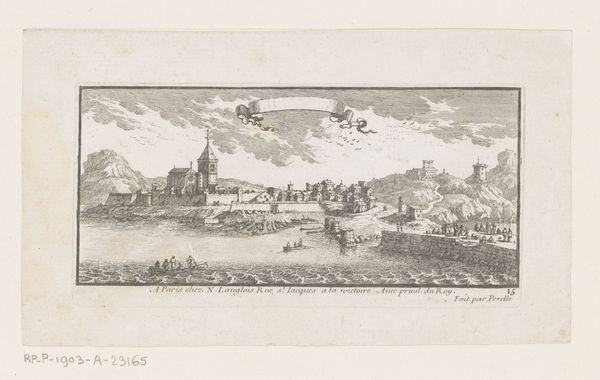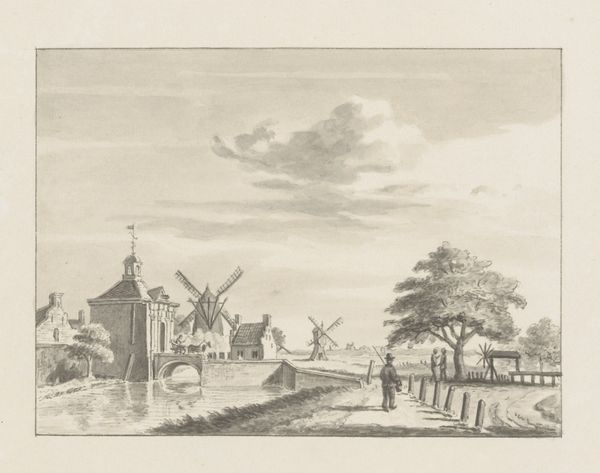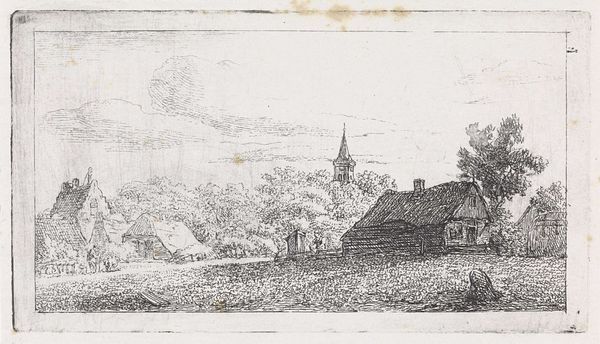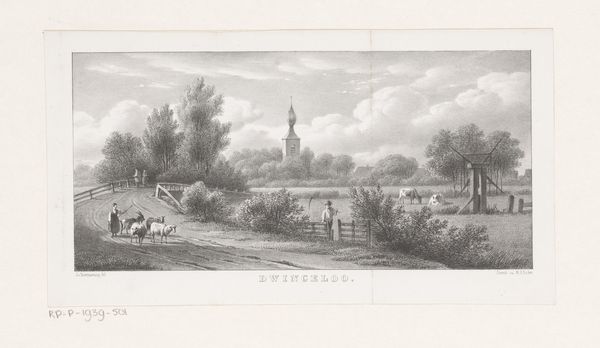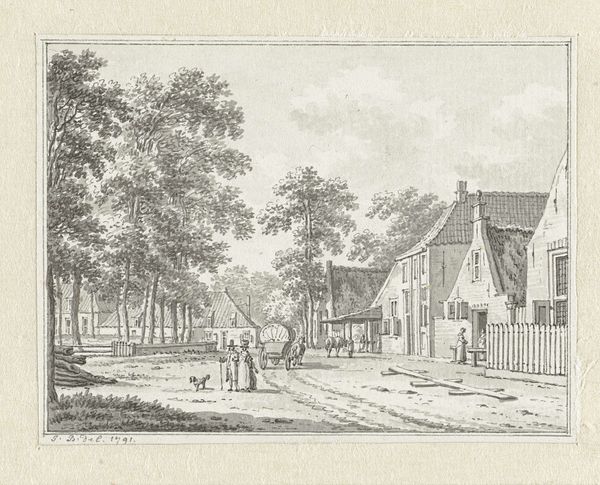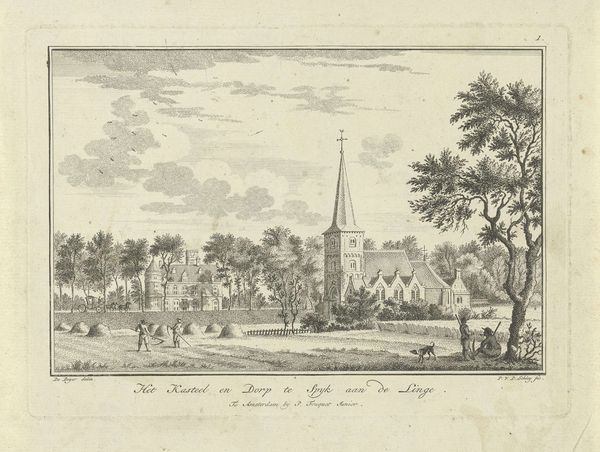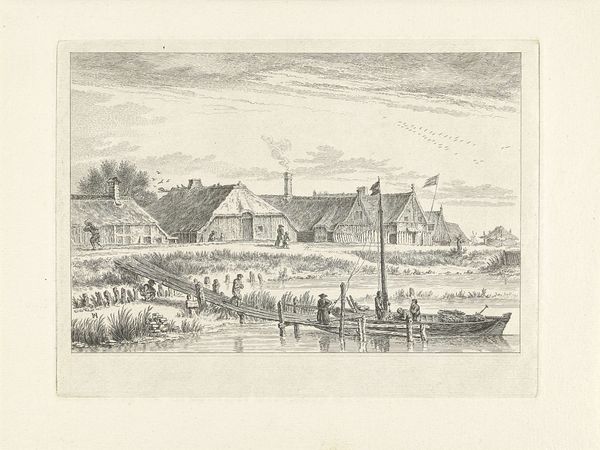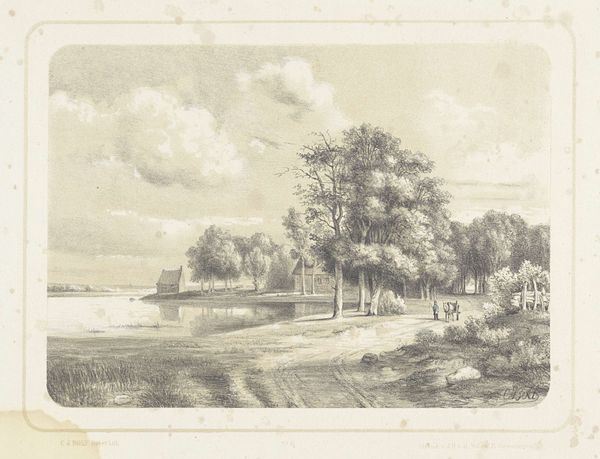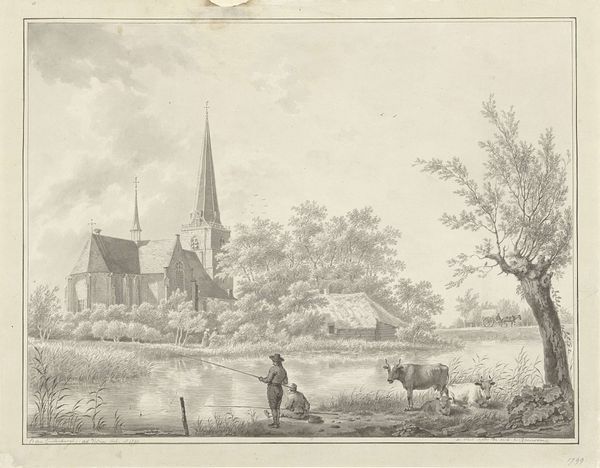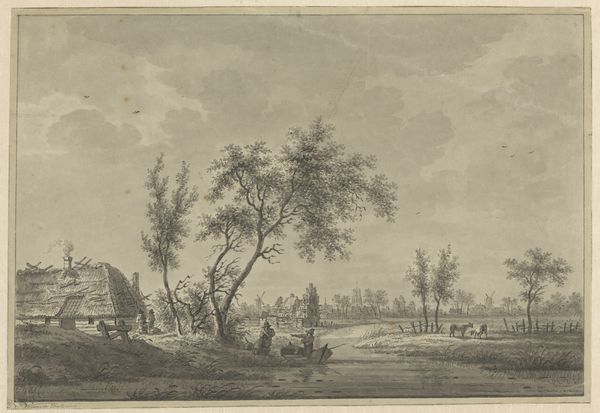
drawing, paper, ink
#
drawing
#
dutch-golden-age
#
landscape
#
paper
#
ink
#
romanticism
#
cityscape
#
genre-painting
#
watercolor
Dimensions: height 124 mm, width 197 mm
Copyright: Rijks Museum: Open Domain
Editor: This is "Gezicht op Ruinen," a landscape drawing in ink on paper by Jan van Ravenswaay, created in 1842. It depicts a quaint village scene with figures, animals, and a church in the background. It strikes me as a very idealized view of rural life; what are your initial thoughts? Curator: It's definitely an idealized view. Considering the context of 1842, we need to ask, who was this idyllic image *for*? Was it intended for urban audiences longing for a simpler life? Or perhaps to bolster a particular image of Dutch national identity during a time of significant social change? How do you think the artist's choice of drawing, rather than painting, might contribute to its accessibility and intended audience? Editor: That’s a fascinating point. A drawing seems more intimate and perhaps less imposing than a large-scale painting. So, was it about shaping public perception? Curator: Precisely. Landscape art at this time often served a crucial public role. Consider how the Romantic movement intersected with nascent nationalisms. These images helped to cultivate pride in the local landscape, rooting national identity in a specific territory. Does the depiction of ordinary people engaged in daily activities feel staged to you? Or genuinely documentary? Editor: Now that you mention it, it does feel a bit… arranged. They seem too perfectly placed within the scene. It adds to that idealized feel. Curator: Exactly. This arrangement directs our gaze and subtly promotes a specific interpretation of rural life as harmonious and orderly. Furthermore, thinking about the institution – could images like this be seen in public exhibitions or prints widely available, shaping collective memory and solidifying certain cultural values around landscape and community? Editor: That's so interesting. I never really considered how landscape art could be used to promote a particular social or political message. I guess I just thought of it as…pretty scenery. Curator: It's rarely just "pretty scenery." By examining the historical context and intended audience, we uncover how art actively participates in constructing our understanding of the world. Editor: Definitely given me a lot to consider when looking at art from now on! Thank you for your insight!
Comments
No comments
Be the first to comment and join the conversation on the ultimate creative platform.
